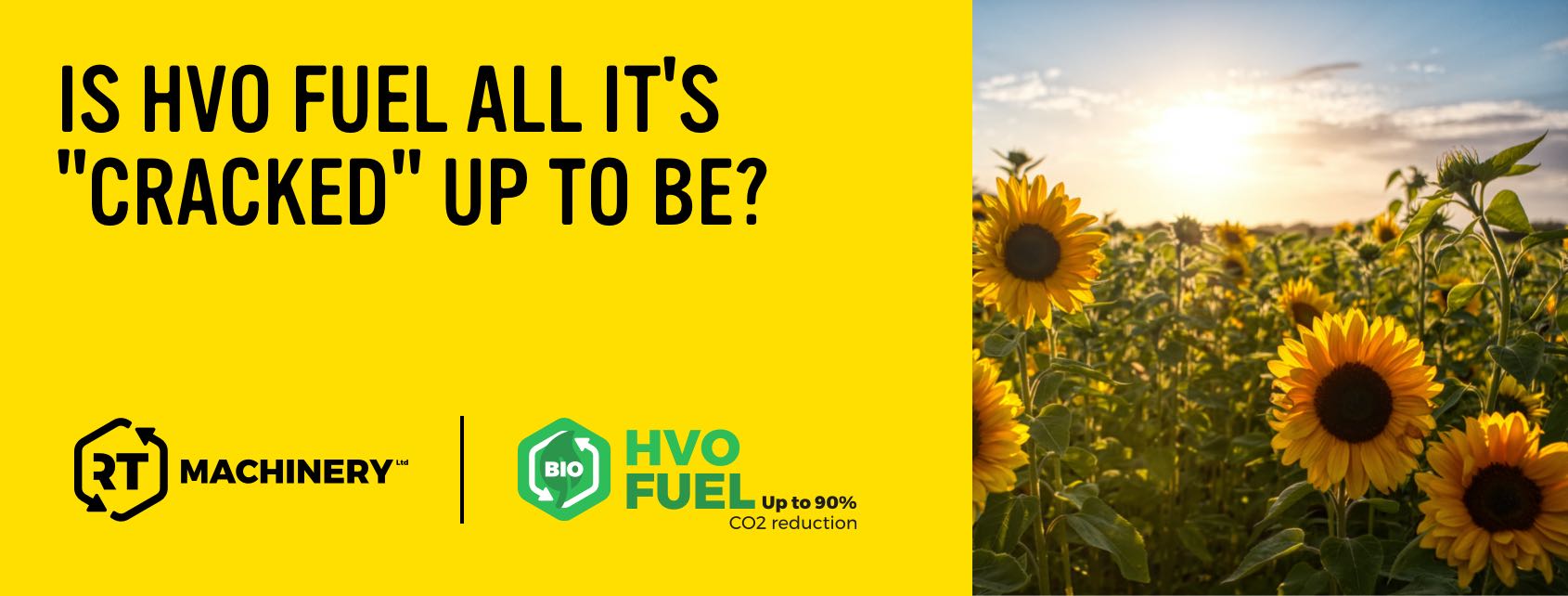Is HVO fuel all it’s cracked up to be?
Groundcare is certainly one of the most challenging industries for reducing our carbon footprint: Battery technology simply isn’t there yet for the bigger and more powerful machines. How much of a solution is HVO fuel?
What is HVO Fuel?
Sometimes known as Renewable Diesel, HVO stands for hydrotreated vegetable oil and is made by cracking and hydrogenating 100% renewable raw materials like vegetable oils, animal oils and fat feedstocks. The resulting paraffinic, kerosene-like diesel fuel has a low odour and very little sulphur content.
Whilst you may find that your fuel economy reduces slightly with HVO compared to using white mineral diesel and the cost may be slightly higher, these factors could well be outweighed by the huge positives of the fuel.
Most importantly, HVO reduces net CO2 emissions by as much as 90% and can be used as a direct, fossil-free replacement for both red and white diesel!
It’s also specially formulated to deliver a cleaner burn and reduce diesel particulates and soot by a massive 80%. So in fact it’s not only a key tool to help you reach Net Zero, it’s also much healthier for your operators and customers AND means no more blocked DPFs or fuel filters!
Neste is one of the biggest manufacturers of HVO and they have produced this video which demonstrates the cleaner burn compared with fossil fuel.
Is it easy to use?
In short, yes. A “drop-in fuel replacement”, it has very similar properties to regular diesel and so there’s no need to drain your tank first or have it modified in any way.
It’s a Biodiesel and yet is FAME-free (no fatty acid methyl ester) so, far from suffering the disadvantages of other alternative fuels, it enjoys high purity, high stability and consistent performance. That translates to working well in cold weather – in temperatures as low as minus 20 – and storing reliably for up to 10 years!
That storage benefit works because there’s no oxygen in HVO, preventing algae from growing.
In addition, HVO is low-density and lightweight, about 25% lighter than water, so is slightly easier to transport.
Are the claims true?
A cetane number gives you an idea of a fuel’s combustion speed. Mineral diesel has a cetane number of 51, biodiesel between 50 and 65, and HVO between 70 and 90! This means you can expect a better-starting performance and less chance of waxing in very cold conditions.
HVO conforms to EN15940 & ASTM D975 standards for paraffinic & diesel fuels, the Fuel Quality Directive 2009/30/EC Annex 2. That is why it can be used as a “drop-in” fuel and why it can be added to a tank with mineral diesel.
There are millions of litres of HVO stocked and made in the UK.
Reductions in emissions are assured by the Renewable Fuels Assurance Scheme (RFAS). Buy HVO from one of their approved suppliers and you can have an extra level of confidence in the fuel.
In conclusion
If you’re keen to make more progress on your journey to Net Zero, this sustainable diesel is definitely worth investigating as an alternative to standard diesel and as an alternative to those battery machines that don’t yet exist!
Why not come along to our RTM Show Live on Wednesday 6th September as we have an industry specialist joining us then to engage with us all and give advice.





